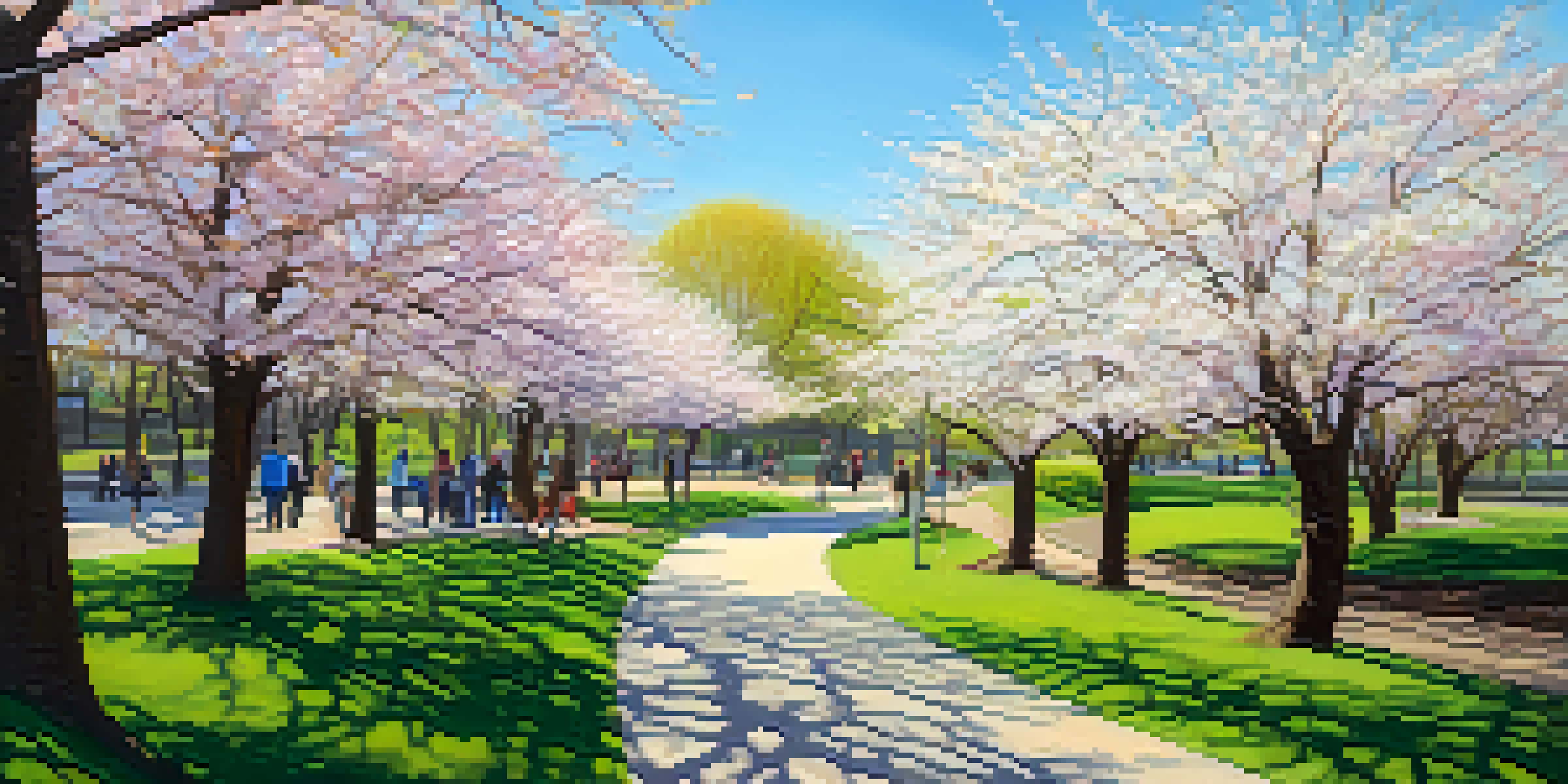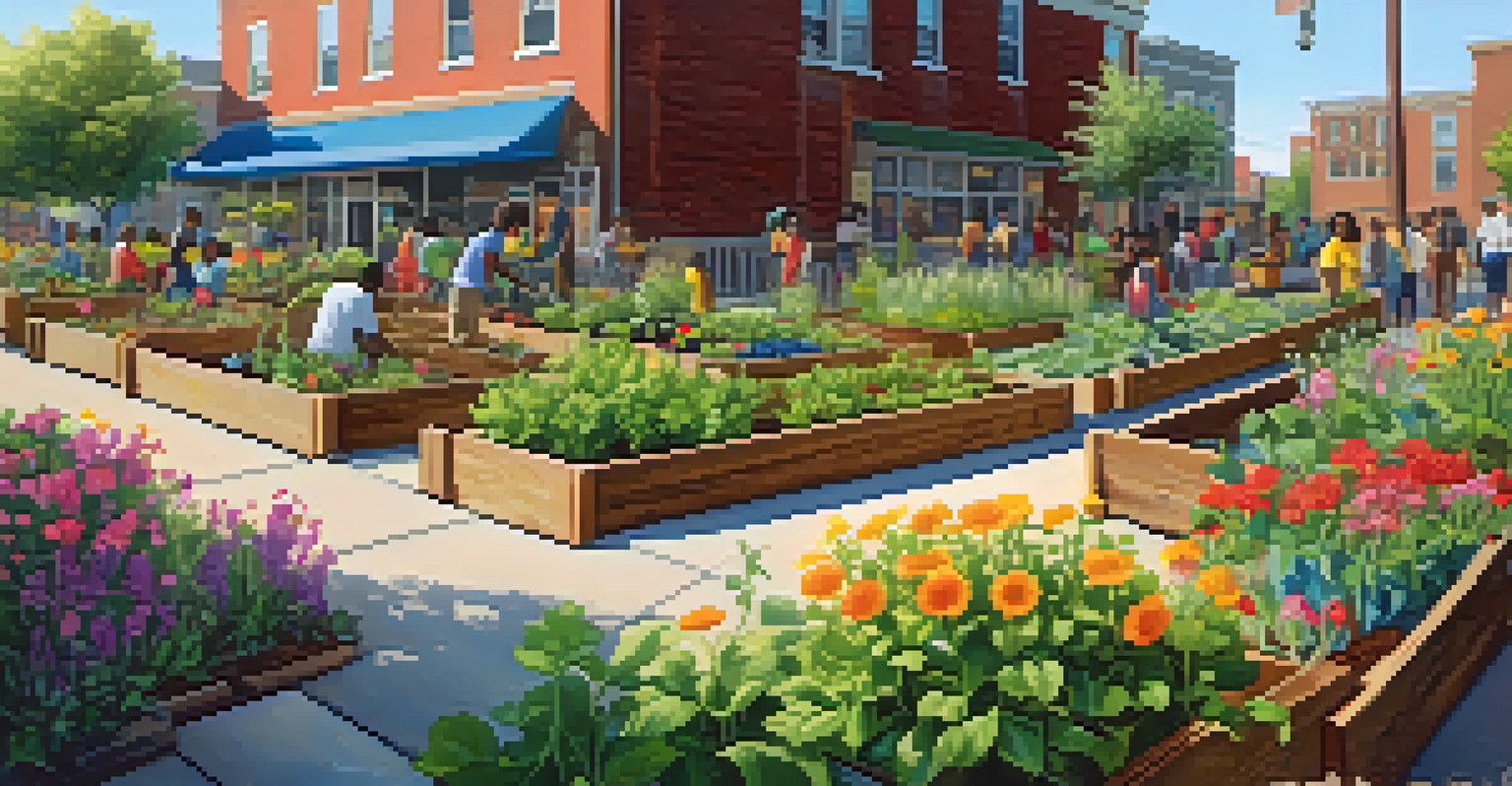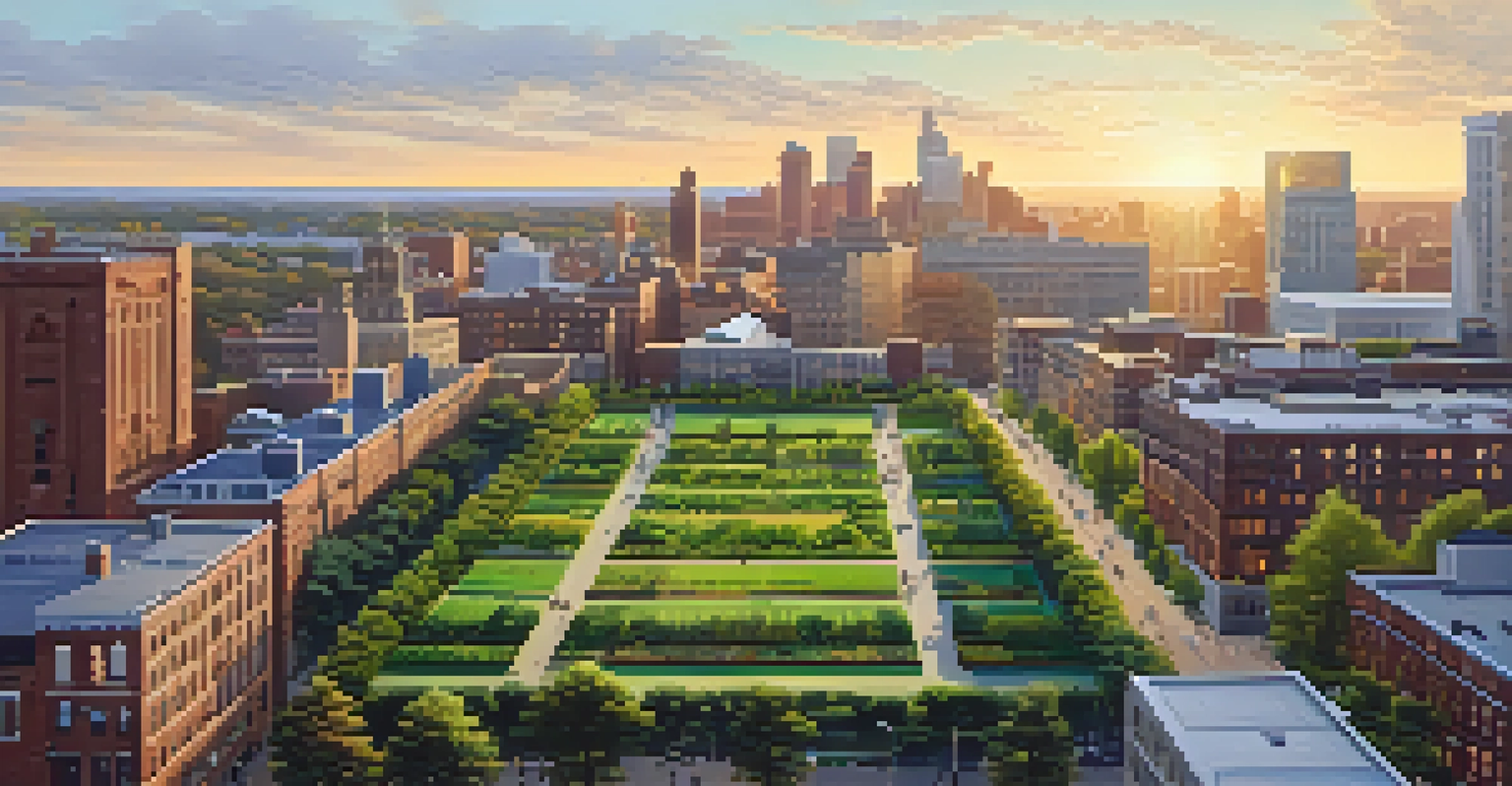Green Spaces in Newark: Challenges and Future Prospects

Understanding Newark's Green Space Landscape
Newark, New Jersey, is a city rich in history and culture, but its green spaces often go overlooked. Parks and recreational areas provide essential benefits, from improving air quality to offering residents a place for relaxation. However, the distribution of these green spaces is uneven, with some neighborhoods enjoying lush parks while others are left with minimal greenery.
Parks and green spaces are essential for the health of our communities, providing not just beauty but also a place for social interaction and physical activity.
The city's various parks, like Branch Brook Park, showcase beautiful cherry blossoms and provide a vital respite from urban life. Yet, many areas in Newark struggle with limited access to such spaces, highlighting the need for equitable distribution of green areas. Understanding this landscape is crucial for addressing the challenges and enhancing the overall quality of life for all residents.
As Newark continues to evolve, recognizing the value of its green spaces becomes increasingly important. These areas are not just patches of grass; they are vital components of the community that foster social interaction and promote physical health. The future of Newark's green spaces will largely depend on how the city addresses current challenges and embraces innovative solutions.
Challenges Facing Newark's Green Spaces
Despite the benefits of green spaces, Newark faces significant challenges, including funding and maintenance issues. Many parks are underfunded, leading to deteriorating facilities and limited programming for the community. This lack of investment can deter residents from utilizing these spaces, perpetuating a cycle of neglect.

Moreover, urban development often prioritizes commercial projects over the preservation or creation of parks. As the city grows, green spaces may be sacrificed for new buildings and infrastructure. This trend raises concerns about the loss of biodiversity and the essential ecosystem services that parks provide.
Equity in Newark's Green Spaces
The uneven distribution of parks highlights the need for equitable access to green spaces across all neighborhoods in Newark.
Another challenge is the environmental impact of climate change, which can affect the health of urban green spaces. Increased flooding, heat waves, and changing weather patterns can strain existing parks and their resources. Addressing these challenges requires a collaborative effort among city officials, community members, and environmental organizations.
The Importance of Community Engagement
Community engagement plays a pivotal role in enhancing Newark's green spaces. When residents are involved in decision-making processes regarding park development and maintenance, it fosters a sense of ownership and pride. Engaging the community can lead to more tailored solutions that reflect the needs and desires of local residents.
The best way to predict the future is to create it.
For example, initiatives like community clean-up events or tree-planting days can help improve park conditions while bringing neighbors together. These activities not only beautify the environment but also strengthen community bonds. Engaging residents in the stewardship of green spaces ensures that they remain vibrant and well-used.
Additionally, community feedback can guide city planners in identifying which areas need more green spaces and what features residents would like to see. By prioritizing inclusivity and collaboration, Newark can develop a green space strategy that truly reflects the city's diverse population.
Innovative Solutions for Expanding Green Spaces
Innovative solutions are essential for expanding and improving green spaces in Newark. One effective strategy is transforming vacant lots into community gardens or pocket parks. These small-scale green areas can provide much-needed greenery and serve as gathering spots for residents.
Another approach is utilizing rooftops and vertical gardens in urban settings. By encouraging local businesses and residents to create green spaces on their rooftops, Newark can increase its greenery without requiring additional land. This not only beautifies the city but also helps mitigate the urban heat island effect.
Community Engagement is Key
Involving residents in the decision-making process fosters pride and ensures that green spaces meet local needs.
Additionally, partnerships with local organizations and schools can foster creativity in developing green initiatives. Collaborating with these groups can lead to unique projects that engage young people and instill a sense of responsibility for their environment. The future of Newark's green spaces lies in embracing innovative ideas and collaborative efforts.
The Role of Technology in Urban Green Spaces
Technology can play a crucial role in enhancing the management and accessibility of Newark's green spaces. Digital platforms can be used to track park usage, report maintenance issues, and gather community feedback on green space needs. This data-driven approach allows city officials to make informed decisions about where to allocate resources effectively.
Moreover, mobile apps can help residents discover nearby parks and recreational opportunities. By providing real-time information about events and park conditions, technology can encourage more people to engage with their local green spaces. This increased usage can lead to a stronger community connection to these areas.
Additionally, incorporating smart technology, such as solar lighting and eco-friendly irrigation systems, can make green spaces more sustainable. These innovations not only enhance the user experience but also demonstrate a commitment to environmental stewardship. Embracing technology can significantly improve the future prospects of Newark's green spaces.
Potential Economic Benefits of Green Spaces
Investing in green spaces can yield significant economic benefits for Newark. Well-maintained parks attract visitors, which can boost local businesses and create job opportunities. The presence of green areas also enhances property values, making neighborhoods more desirable places to live.
Moreover, green spaces can reduce healthcare costs by promoting physical activity and mental well-being among residents. Access to parks encourages outdoor activities, leading to healthier lifestyles and potentially lower rates of chronic diseases. This not only benefits individuals but also reduces the burden on the healthcare system.
Economic Benefits of Green Areas
Investing in green spaces can boost local businesses, enhance property values, and reduce healthcare costs for Newark residents.
Additionally, green spaces can attract tourism and events, further contributing to the local economy. Hosting community festivals, farmers' markets, or outdoor concerts in parks can draw in visitors from surrounding areas. By recognizing the economic potential of green spaces, Newark can prioritize their development as a key investment in the city's future.
Looking Ahead: The Future of Green Spaces in Newark
The future of green spaces in Newark looks promising, provided that the city takes proactive measures to address current challenges. With community engagement, innovative solutions, and technological advancements, Newark has the potential to transform its urban landscape into a greener, more inviting space. This transformation can significantly enhance the quality of life for residents.
Moreover, as cities around the world increasingly recognize the importance of green spaces, Newark can learn from successful initiatives in other urban areas. By adopting best practices and adapting them to the unique needs of its communities, Newark can create a blueprint for sustainable green space development.

Ultimately, investing in green spaces is an investment in a healthier, more connected community. As Newark navigates its challenges and explores future possibilities, the commitment to enhancing its green spaces will play a vital role in shaping the city's identity for generations to come.